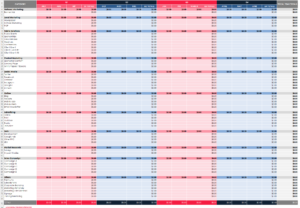Retargeting Strategies: Turning Browsers into Buyers Retargeting Strategies: Turning Browsers into Buyers
With the increasing information overload on the internet, retargeting strategies have become quite effective and essential for businesses to foster customers who have toured their brand but have yet to perform the intended conversion. To decrease the shopping cart drops or increase return on investment, retargeting advertising is critical in curving the client’s paths. In Australia, as the consumer behaviour model becomes more internet-based, companies can ensure the effect of digital marketing through retargeting campaigns to drive engagement and results.
As Andrew Knight, founder of Vandalist Marketing, explains, “Retargeting is a testament to the enduring power of brand recall. In an era of fleeting attention, it serves as a subtle reminder of an unmet desire or an unexplored opportunity. It transforms the casual browser into a committed buyer, underscoring the irreplaceable role of persistence in winning the opportunity.”
High Potential of Leveraging on Retargeting Strategies
Retargeting strategies create potential customers who previously expressed an interest in the brand to remember it by focusing them on the ads. The users targeted in these ads are those who once visited a website, viewed certain products, or added a few products to their online shopping cart without going through with the purchase. Most of the time, the users targeted with retargeting ads are the same people looking for a particular product, and its relevant advertising can increase their probability by 70%.
In Australia, e-commerce sales have increased exponentially, which increases the need for retargeting. In 2023, online shopping accounted for 14.4% of total retail sales in Australia, with expectations that this growth will continue.
Expert Tip: Tim Hill, the co-founder of Social Status, believes, “Retargeting ads without customising the audience parameters is a waste of end resources distressed with way too many ads. Personalisation is important since many brands compete for people’s attention. Changing your retargeting strategies depending on what users have done previously can help improve conversion rates.”
Decreasing Shopping Cart Abandonment using Effective Retargeting
Abandonment of shopping carts, however, is one of the greatest weaknesses facing e-commerce stores, and statistics show that over 60 to 70% of online shopping carts are abandoned. Especially in Australia, where mobile phone purchases have grown tremendously, retrieving users who have added things to their carts is crucial, more so items that are left unpurchased.
These strategies, properly managed, can solve the problem noticed by many companies. For example, they can run special companion promotions that will appeal to the audience who abandoned their shopping carts. In such cases, the messages can evoke urgency or eliminate barriers to purchase, allowing the consumer to buy.
As per retargeting the shoppers who look to abandon carts, 26% of all sales losses can be recovered. This shows how critical it is to ensure no opportunity to earn revenue is neglected, but retargeting adds employs such opportunities to regain.
Latest Insight: For example, things like these don’t go unaddressed by Chloe Thomas, the author of the book “eCommerce Marketing: How to Get Traffic That BUYS.” She thinks, “Businesses should use dynamic retargeting ads that feature products previously left in the cart for purchase. This creates awareness and compels users to return to the website to make the intended purchase.”
Raising Conversions with Frequency Capping and Sequenced Ads
Despite the positive side of retargeting, companies are overusing the effectiveness of this strategy. While watching video advertisements, users can quickly develop ad fatigue and a tarnished image of the brand. This is where frequency capping and sequenced ads come into play.
Using frequency capping is crucial for businesses seeking to minimise excessive exposure to retargeting ad fatigue among users. In the same vein, sequenced retargeting ads also help companies create a storyline where users are served with ads for them to convert. For example, the first ad may refresh the customer’s memory of the brand; the second might attract the customer with a discount; and the third could present the customer with reviews to instil confidence in purchasing.
According to eMarketer reports, efficient frequency capping can increase click rates by up to 300% compared to without frequency caps. This also shows that retargeting ad delivery must be handled carefully to ensure maximum user engagement.
‘Retargeting is not simply showing the same ad over and over; instead, it is fostering a bond with the customer. When done well, sequenced ads assist users through the conversion funnel without drowning them with advertising.’
Retargeting strategies in Australian businesses present a huge opportunity to win back customers who might have left, decrease abandonment of carts, and increase sales. Sequencing ads will be optimised if businesses adopt the right strategies, such as campaign strategies, retargeting customers for frozen cart abandonment, and frequency capping. Considering that the eCommerce sector in Australia is steadily growing, such strategies are bound to ensure that all the brands are competitive and at the top of consumers’ minds.









